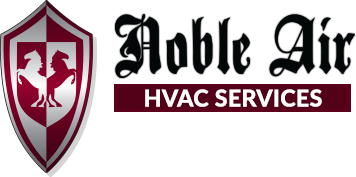Even when the heat is on outside, with sun radiating down, it can be quite cold in the office. In Phoenix and across the contiguous forty-eight, there are anecdotes galore of employees experiencing uncomfortable work environments. What’s most problematic isn’t discomfort, but, the impact. It should come as no surprise that productivity is directly related to environment. The phenomenon is so prominent that higher institutions of learning have conducted studies about it. For instance, research by Cornell University found when raising workplace temperature from 77 degrees up from 68 degrees, work errors fell by 44 percent. More astonishing, overall productivity increased by 150 percent, according to a news report published by FOX Business.
How Office Temperature Fluctuations Hurt Businesses
The fact of the matter is, comfort has a lot to do with employee productivity. The referenced study states, in-part, “at 77 degrees Fahrenheit, the workers were keyboarding 100% of the time with a 10% error rate, but at 68 degrees, their keying rate went down to 54% of the time with a 25% error rate.” This is reiterated by a CareerBuilder survey which included 4,285 full-time US employees. It found 50 percent of its respondents stating workplace temperatures were too hot or too cold.
If you’ve ever had an ongoing thermostat battle with a colleague or been forced to outfit yourself depending upon the boss’s fluctuating comfort zone, then you’ve experienced the frustrations associated with workplace temperature issues. However, this constant climate conflict becomes more than a pesky annoyance when it impacts overall productivity. —Houston Chronicle
Empirical studies clearly support anecdotal evidence of what business owners and team members see on a daily basis: long lunches, daydreaming, eager but unnecessary coffee shop or fast food runs, and several small breaks during the day. It’s not just perceived, it’s quite real, so real that 25 percent of employees admit in survey to doing less work in the summer. This demonstrates that regardless of the temperature outside, it’s workplace temperature which is most critical. When businesses have HVAC systems that aren’t properly working, it has a real world, negative impact on staff, in more ways than one:
- Workplace productivity declines. The number one grievance of employees, no matter the industry, is workplace temperature, according to International Facility Management Association. When team members are cold or warm, productivity decreases, and, errors spike. That’s backed by a study from Northumbria University, which concluded temperature is essential to productivity and error rate.
- More employees fall ill. It’s not just heat and cold impacting workplaces, it’s also humidity. When moisture levels rise, harmful bacteria festers, grows, and circulates through HVAC systems, which is broadcast throughout the workplace. That spreads germs and in-turn, leads to illness. Of course, this creates a negative affect on output.
- Loss in revenue. Whether it’s too cold or too warm, customers will definitely notice. So much, loyal, repeat customers will frequent less because of their level of discomfort. This is most harmful to restaurants and retail establishments, which rely most on repeat business.
- Employee absences increase. Uncomfortable environments are simply unpleasant, to the point employee absences increase. It’s understandable — avoiding a few days of work here and there, while still being compensated — will become a very viable option.
The Occupational Health and Safety Administration (OSHA) recommends a workplace temperature between 68 and 76 degrees for optimal productivity. Other experts recommend a range between 70 to 73 degrees. Practically all agree to humidity level between 20 and 60 percent. If your business is experiencing cooling or heating problems, it’s time to call an experienced HVAC service — because every day that goes by results in higher and higher operating costs.

